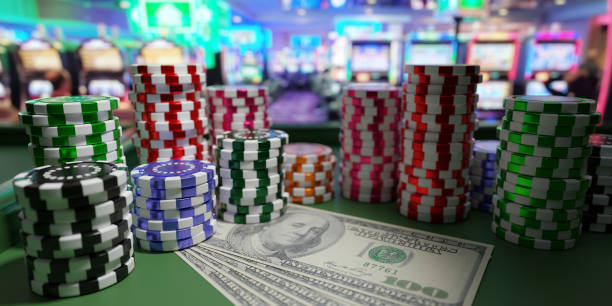Card counting allows you to reduce the house edge and manage your risk, greatly increasing your chances of success. Imagine being able to predict the next card in the deck and, therefore, place the most profitable bet. Learning how to use card counting in a casino is easier than it may seem at first glance, and with our guide, you will master the technique in no time.
What is card counting?
Card counting is a strategy for estimating the probability of certain cards falling out based on cards already played. The idea is based on a ranking system in which each card in the deck is assigned a zero, negative, or positive value. This value depends on whether removing a card gives the player or the dealer an advantage.
The value calculated in this way shows the current result: if the result is negative, the advantage is in the casino’s favor, while if the result is positive, the advantage is in the player’s favor.
With multiple decks in play, it can be not easy to count cards in a casino and understand which side has the advantage. Fortunately, a simple formula can determine the score: divide the current score by the remaining decks.
Knowing the outcome will allow you to modify your play style and bet size to maximize your money. When you have a significant advantage, it is worth betting more, and you should refrain from betting if the casino has an advantage.
Legality and ethics of card counting
The rules do not prohibit card counting unless players use external devices such as hidden cameras or software. For example, it would be considered cheating in Nevada (where Las Vegas is located), and such players would risk criminal prosecution.
Casinos oppose card counting because it reduces their revenue, and they actively take steps to prevent it. Some even employ former professional “counters” who know how to tell if someone else is counting cards.
If casinos suspect such activities, they can blacklist a player and share the information with other venues to prevent such players from accessing the game.
In addition, casinos implement various measures that make it initially more difficult for players to count cards:
- Using multiple packs of cards in a game.
- Dealers shuffle cards more often.
- Automatic card shuffling machines.
- Monitoring the game using special equipment.
- Instructing the dealer to engage the player in conversation actively.
From an ethical perspective, the gaming community sees casino card counting as a grey area. Players consider it a legal strategy. In reality, there is nothing criminal about it. Casinos, on the other hand, see it as a form of fraud. If they ban you, that is their right. They can refuse service to anyone who violates their rules.
Popular card-counting systems
Edward Thorpe laid the foundation for modern card-counting systems by creating the first methodology that became the basis for dozens of others. Higher-level systems include an algorithm that assigns values to cards other than +1, -1, or 0. Some systems consider different parameters to determine a separate current score for different cards. All of them are mainly used in land-based casinos. Card counting in an online casino will not be efficient enough because infinite decks are used here.
Hi-Lo system
The Hi-Lo system, developed by Stanford Wong, divides cards into 3 groups. Cards 2 through 6 are given a value of +1, and cards 10 through Ace are given a value of -1.
How it works: One of the most widely used systems. It assigns values to each card:
- 2-6 = +1 (Low cards)
- 7-9 = 0 (Neutral cards)
- 10-Ace = -1 (High cards)
What it does: Each time you see a card with a value of 2, 3, 4, 5 or 6 lying on the table, you add +1 to your current score. Similarly, you must subtract -1 from your current score if you see the dealer draw a 10, J, Q, K or A. You ignore the remaining cards. As cards are dealt, you adjust the running count based on the cards seen. A higher positive count indicates a deck rich in high cards, which is advantageous to the player.
Difficulty: This simple and easy-to-remember system is perfect for beginners who want to learn how to count cards in poker and other casino games.
KO (Knock-Out) System
The KO system, also known as the knockout card counting system, is similar to the Hi-Lo system, where a card with a face value of 7 is assigned a value of +1.
How it works: This is an unbalanced system, meaning that when you count through an entire deck, the count won’t end at zero. It assigns the same values as the Hi-Lo system but doesn’t adjust for the number of decks in play.
- 2-7 = +1 (Low cards)
- 8-9 = 0 (Neutral cards)
- 10-Ace = -1 (High cards)
What it does: A running count that helps estimate the player’s advantage without true count conversion, making it slightly easier for beginners.
Difficulty: Easier than Hi-Lo because it doesn’t require adjusting for multiple decks, but slightly less accurate.
Omega II System
How it works: A multi-level system that assigns different point values to different cards:
- 2, 3, 7 = +1
- 4, 5, 6 = +2
- 9 = -1
- 10, J, Q, K, Ace = -2
- 8 = 0
What it does: The Omega II system is highly accurate but more complex, as it requires tracking a wider range of values and converting to a true count based on the number of decks in play.
Difficulty: Intermediate to advanced. It requires practice to master, but it’s more precise in predicting player advantages.
Red Seven System
How it works: Similar to Hi-Lo, but it distinguishes between red and black 7s:
- Red 7 = +1
- Black 7 = 0
- 2-6 = +1
- 8, 9 = 0
- 10-Ace = -1
What it does: The red seven cards add a twist to improve counting accuracy. The system allows for an unbalanced count that does not require a true count conversion for single or double-deck games.
Difficulty: Slightly more challenging than Hi-Lo but still accessible for beginners willing to put in the effort.
Zen Count System
How It Works: Another multi-level system, like Omega II, with different point values:
- 2, 3 = +1
- 4, 5, 6 = +2
- 7 = +1
- 8, 9 = 0
- 10, J, Q, K, Ace = -2
What It Does: This advanced system is designed to increase accuracy by assigning different values to cards. It’s more effective than the Hi-Lo system in multi-deck games, but it requires more mental arithmetic.
Difficulty: Advanced. It’s highly effective for seasoned counters but requires lots of practice to execute correctly.
Wong Halves System
How it works: This complex system assigns fractional values to cards:
- 2 = +0.5
- 3, 4, 6 = +1
- 5 = +1.5
- 7 = +0.5
- 8 = 0
- 9 = -0.5
- 10-Ace = -1
What it does: The Wong Halves system aims to fine-tune the level of accuracy by using fractional counts. It’s designed to be more precise in detecting favorable conditions, but it demands a lot of mental work and true count conversion.
Difficulty: Very advanced. This system is suitable for experienced card counters looking for precision but is difficult to master due to its complexity.
Revere Advanced Point Count (RAPC)
How it works: A multi-level system similar to Omega II and Zen, with the following values:
- 2, 3 = +1
- 4, 5, 6 = +2
- 7 = +1
- 8 = 0
- 9 = -1
- 10-Ace = -2
What it does: This advanced count is designed for more experienced players and is particularly effective for multi-deck games. It is one of the more complicated systems, but it can offer strong results with practice.
Difficulty: Advanced. It requires significant practice and focus, but it is highly accurate in determining advantageous situations.
Uston APC (Advanced Point Count)
How it works: A highly complex system with values:
- 2, 3, 7 = +1
- 4, 5, 6 = +2
- 9 = -1
- 10, J, Q, K, Ace = -2
- 8 = 0
What it does: This system is highly accurate and effective for multi-deck games but requires a high skill level. Like other advanced systems, it also requires conversion to a true count.
Difficulty: It is very advanced. It is designed for experts with plenty of practice and requires precise tracking of multiple card values.
High-Low Opt 1 & 2 Systems
How it works: These systems are variations of the Hi-Lo method but adjust for optimal performance in single-deck or double-deck games. They assign values similar to Hi-Lo but tweak them based on the game type.
What it does: These systems aim to provide more tailored strategies for specific game environments, allowing for more refined betting and playing strategies.
Difficulty: Intermediate to advanced, depending on the variation used.
Each system has pros and cons, depending on its complexity, the required practice level, and the player’s goals. While simpler systems like Hi-Lo or KO are popular among beginners, more advanced players might gravitate towards systems like Omega II or Wong Halves for greater precision.
Application of card counting in various games
Although card counting is primarily used in blackjack, the technique is also useful in other casino games. For example, in poker variants where you play with multiple players and all of their cards are exposed. This allows you to get more information about the remaining cards in the deck. In baccarat, card counting is less efficient because once the bet is placed, the main process is controlled by the dealer.
Blackjack
When playing blackjack, card counting can greatly increase your potential winnings. You have more opportunities to influence the outcome since you decide after each card is dealt.
You are likelier to win in blackjack if you have more 10- or 11-point cards in the deck. By counting cards, you can more effectively keep track of the ratio of low- and high-value cards still in the deck.
Most casinos use 6-8 decks at the blackjack table. As a result, you have to determine the actual score based on the number of decks in play. The actual score of +3 is the point where the house edge is eliminated, making the player’s position more favorable. The player edge at this score is around 1-2%, depending on the game’s rules.
Baccarat
You can’t influence the outcome in baccarat once you’ve placed a bet. In this case, card counting determines when bet on the banker (negative outcome) or the player (positive outcome) is more profitable.
Please note that to get a real edge over the casino, the actual score must be above +16.
Another tactic is calculating the most advantageous moment to place a bet on a draw, which usually pays out at odds of 8:1 or 9:1.
- Pay attention to a group of cards that may dominate at the end of the deck. If most of the cards in the deck have a value of 0, the result is more likely to be a tie.
- If no odd cards are in the deck, your draw probability increases to 62%. Add +1 to your score for each odd card until you reach 160, then bet on a tie.
Spanish 21
Spanish 21 is a kind of blackjack played with a deck with 48 cards, with all 10s removed. It gives the house a larger edge. Card counting can be applied here, too, especially if one keeps count of high-order cards such as Aces, Jacks, Queens, and Kings. A higher count of these left within the deck works to the player’s advantage, increasing the chances of hitting strong hands.
Since there are no 10s, the Hi-Lo card counting system can be slightly modified for Spanish 21, and the player can use that to make appropriate bets about remaining high cards in the deck.
Pontoon
Pontoon is yet another version of blackjack, quite similar to Spanish 21, with a similar objective to 21. The counting in Pontoon would work just like in Blackjack because the high cards benefit the player. This, in turn, can be used to gauge when to bet big or conservatively by keeping the ratio between the low and high cards.
The betting changes would typically employ a standard Hi-Lo system, but you must adjust your strategy to the specifics of the Pontoon rules. These would include the advantageous five-card trick, since it often changes the dynamic of the count.
Three Card Poker
While card counting is less effective in Three Card Poker because only a few cards are dealt, it will still keep track of face cards and Aces to give you a slight edge. High cards in this game will be useful, mainly when making hands such as straights or flushes.
Although less powerful than in blackjack, you can track the face cards and Aces to get an idea of the relative strength of the hands to come to make better play/fold decisions. You should also know this game is more about luck than skill.
Texas Hold’em Poker
Card counting is less applicable in Texas Hold’em because the community cards are random and different for every new hand and because, in most cases, there is more than one player. You will still be able to know how many of any particular card has appeared in the community’s hands to inform your decisions better. You try to make educated guesses based on the cards exposed on the table and those that other players might have folded.
Card counting in Hold’em is more about estimating odds and probabilities than a true count. You will find that keeping track of how many high or low cards have been played – especially during tournaments, helps you determine if the time to bet or fold is now.
Caribbean Stud Poker
Application of Card Counting: As in Three Card Poker, Caribbean Stud Poker allows for limited card counting, but tracking the Aces and Kings is vital since those can make the strong hands. You can sometimes get a little more idea of your hand’s strength by observing other players’ exposed cards.
This doesn’t afford nearly as much of an advantage, but if many high cards have been played, you should adjust your bets and folds accordingly. It’s hard to get a big advantage from card counting in Caribbean Stud, though, as it’s primarily a game of luck.
Pai Gow Poker
In the Pai Gow Poker game, the player makes two poker hands out of seven cards dealt, trying to beat both hands of the dealer. Card counting in Pai Gow can come in handy while estimating the probability of the dealer making strong hands. You may count face cards and Aces to help you make the best hands possible.
Tracking high-value cards helps you estimate the probability that your opponents will make a better hand, giving you an edge on how to set your hands.
Casino War
The object of Casino War is to have a higher card than the dealer’s. Card counting can be used by counting how many high-point cards remain in the deck versus low-point cards. When more high cards remain in the deck, the slight advantage shifts to the player.
Even though Casino War is an extremely simple game that requires few decisions, card counting can let you know when to be more aggressive in your betting since high-value cards tend to win the tie situations more often.
Rummy Variants
Rummy and its variants, including Gin Rummy and Indian Rummy, require card counting by keeping a tab on discarded cards so one can make reasonably accurate predictions about which cards are still left in the deck. This information makes it easy to determine which cards to pick and discard.
In Rummy, professional players use card counting to create an approximate idea regarding the cards opponents may have and calculate the probability of drawing a certain card in the next draw to develop better strategies for creating hands.
Ultimate Texas Hold’em
Card Counting Application: Similar to regular Texas Hold’em, card counting in Ultimate Texas Hold’em determines the likelihood of cards coming out at the community hands. By keeping track of cards that have come out, you’ll get a sense of what is stronger and can determine whether to bet or fold.
While this is heavily a game of chance, paying attention to the value of cards that have been played and those in your hand will help you make better choices at times, especially when you raise more with a strong hand.
Let It Ride
Let It Ride is a variation of poker in which the player places a bet on a hand consisting of three cards of the player and two community cards. With only so few cards being played, card counting is less effective, but you can tell whether to pull some of your money or “let it ride,” depending on the number of high-value cards that come out of the deck, namely 10s, Jacks, Queens, Kings, and Aces.
Count the number of face cards and Aces that have been dealt to determine a better estimate if a strong hand is likely to happen. Adjust bets according to such.
Strategies and tips for effective card counting
Once you learn how to count cards in blackjack and other casino games, it is important to put this knowledge into practice.
- Manage your bankroll wisely
You should have enough funds, at least 100-150 bets, to withstand losses and wait for a favorable result. For example, if you have a positive result of +2 or more in blackjack, increase your bets, but do not exceed 5% of your total bankroll. It is important to play responsibly and keep control over your money. - Be careful not to attract attention
Instead of doubling or tripling your bets abruptly when the score is high, gradually increasing your bets by 25-50% is better. Casinos closely watch players who consistently place large bets in the last hand. Try not to stand out, change tables or take short breaks every 30-45 minutes. - Be able to adjust your strategy to the game conditions
Remember to convert the current score to the actual score when playing with many decks. For example, if the current score is +10 with 5 decks remaining, the actual score will be +2. Blackjack players should remember that when many tens and aces are left in the deck, there is a high probability of a blackjack, and insurance is the best option. - Practice regularly
Card counting is very much an activity that requires constant practice. The more you practice, the better and more natural the process becomes. You can first start with a single deck at home and make sure to reduce the time of running and true counts constantly. Then, when comfortable, you can add more decks to simulate casino conditions. You also practice using different conditions, such as distractions, with card counting apps or simulators. This enhances your speed and accuracy. - Use the right true count conversion
What gives the true count is what is required to determine the player’s advantage in multi-deck games. Divide the running count by the number of decks left to get the true count. Suppose the running count is +12 and four decks are left; the true count would be +3. Make regular estimates of how much decks remain because the true count is key to determining when to increase or decrease bets. - Betting strategy
Betting correctly is critical to card counting. When the true count is either low or negative, make minimum bets at the table. Raise your bets as the true count increases. Rather than making large jumps in your bets, raising smaller steps of about 25-50% is better to avoid suspicion. The trick here is striking a balance between being aggressive enough to maximize profits but at the same time subtle enough to remain under the radar. - Generate misleading bet patterns
Mask your bet pattern by camouflaging them slightly, even when the count is neutral. Gradually raise your bets across several hands rather than skyrocketing when it turns favorable. More so, chat, order drinks, or shift position at the table to keep you looking no different from other players. - Never place recognizable bets
It’s very important not to make sudden or extreme increases in your bets; this may raise suspicions by the casino staff of your counting. Instead, randomize your betting amounts slightly, even when the count is low. Making varied bets, even if just a little, will make your actions look and feel more natural, lessening the chances of getting detected. - Table selection
Not all tables are created equal regarding player advantage in blackjack. Seek out tables with favorable rules, such as 3:2 payouts for blackjack or dealers standing on soft 17. Tables that use fewer decks are also more favorable to card counters. Preferably, tables with less players will see more hands dealt; that means you’ll have an increase in the total number of chances you have at exploiting favorable counts. - Team play
Team play is an advanced strategy wherein the risk is spread out and suspicion minimized. The scheme involves a group of players, although not all play the active role, sometimes just act as spotters without adjusting their bets according to the count. The spotter calls in a “big player” when the count becomes favorable. This approach allows the team to capitalize on the count but much less suspiciously than doing it individually. - Tracking the shuffle and deck penetration
Deck penetration refers to how deeply into the shoe the dealer will go before shuffling. The deeper the penetration, the better the opportunity the card counters gain from favorable counts. Thus, you need a dealer who can allow the shuffling of at least 70-80% of the cards dealt. Too frequent shuffling by a dealer means you cannot gain an advantage, and it will be good to move to another table. - Mind the table manners
It is very important to appear casual and friendly at the table not to raise suspicion. Make small talk with the other players or the dealer, ask casual questions, and act like you are playing for fun. This way, remaining indistinguishable from regular gamblers will be easier without raising suspicion regarding your card-counting activity. - Know when to walk away
One of the most difficult aspects of card counting is to know when to quit. By far, the temptation would be to want to continue at the table during a winning streak, but this leads to a greater chance of being detected. Set pre-defined limits on both your wins and losses. When you hit your target, it is time to exit and move away from that table. Other suggestions to avoid suspicion include taking breaks or changing tables frequently. - Keep calm under pressure
Casinos have a very keen eye for suspicious behavior. Keep calm during a confrontation or interrogation by the staff. Answer all strategy-related questions by saying that you are playing upon your good luck, because of your gut feelings, or ‘just because’. Always be relaxed and friendly, and don’t admit any suspicion about card counting. - Know the casino’s countermeasures
To combat card counting, casinos employ several methods, including frequent shuffling or restricting deck penetration. Continue being cognizant of such countermeasures and adjust your strategy appropriately. Suppose you think a dealer is over-shuffling or restricting the penetration too much. In that case, that’s probably a good time to find another table or switch to a different casino to reduce the risk of being detected. - Using several card-counting systems
While popularly used, the Hi-Lo system is a little too general, and there are more accurate advanced systems. Depending on the game and the number of decks used, you can flip out to different systems for a better advantage, such as Zen Count or Omega II for multi-deck games. Mastering multiple systems allows you to adapt your approach according to the prevailing game conditions and get better results.
Limitations and risks
Players who use card counting in a casino risk being asked to leave by casino staff. While card counting is not illegal, casinos can refuse to pay out winnings and ban such players from all online casinos.
Using this strategy also requires a fairly large bankroll. In this case, the player’s advantage usually does not exceed 0.5-1.5% even with an accurate calculation. In addition, card counting does not guarantee constant winnings and you should be prepared for a series of losses.
Final thoughts
Card counting requires some skill, but it can be useful for maximizing your casino winnings. Contrary to popular belief, you don’t have to memorize which cards were dealt. You just need to know the value of the cards left in the deck.
Despite the legality of card counting, it is important to be careful. Set a budget for your gaming session in advance, avoid rash risks, and enjoy gambling responsibly. By learning how to use card counting properly, you can count on a pleasant increase in your bankroll and discover an interesting hobby.






















